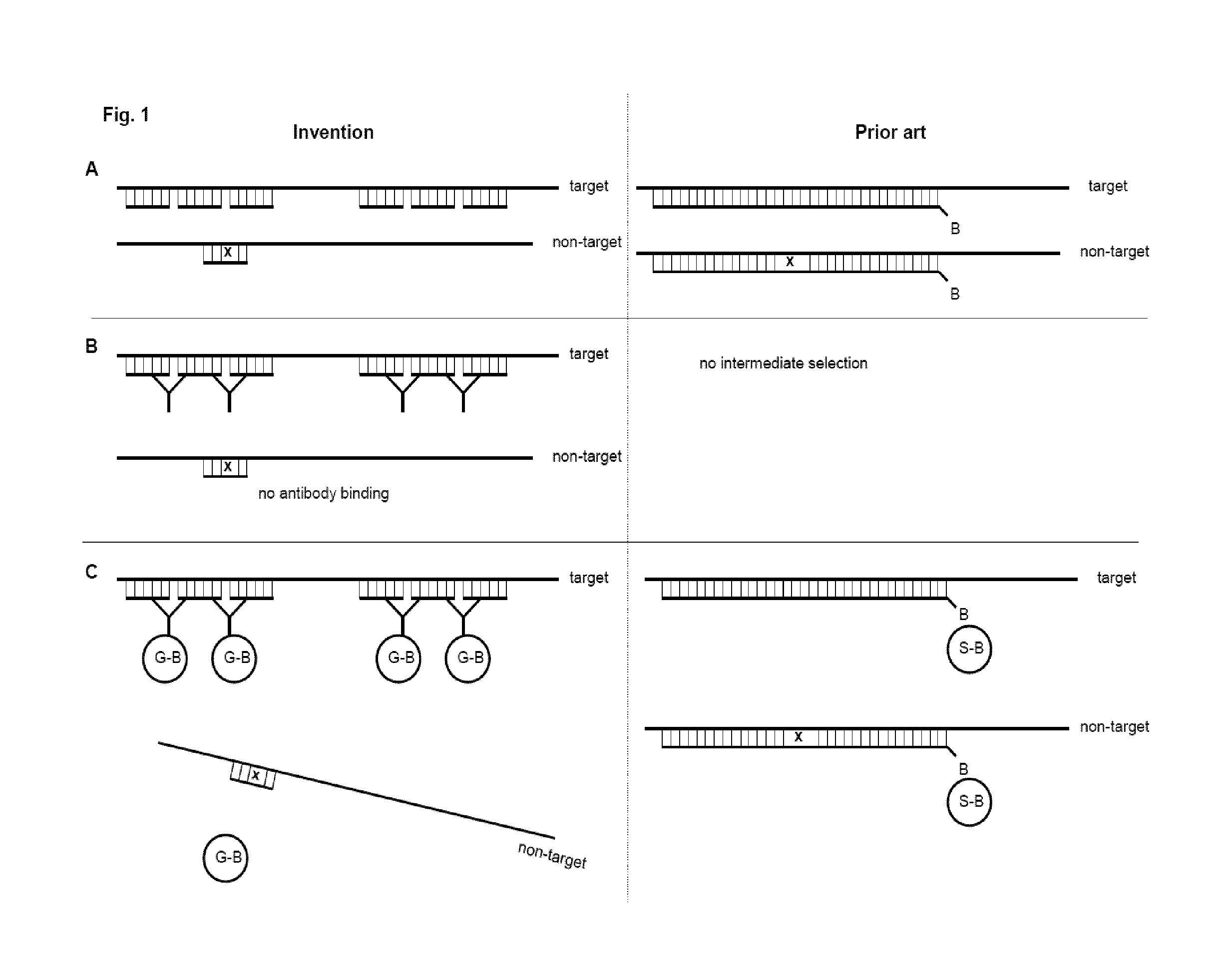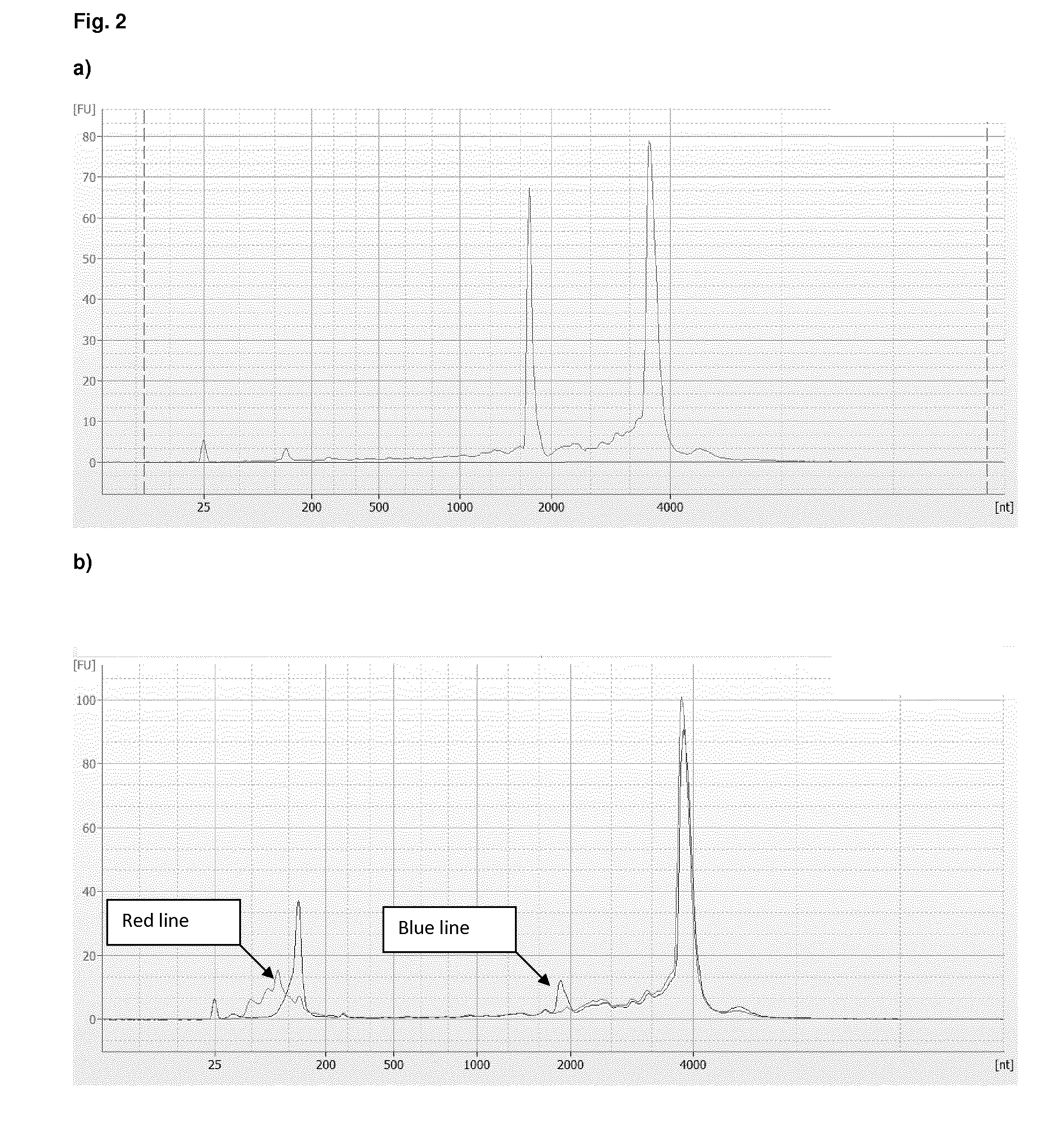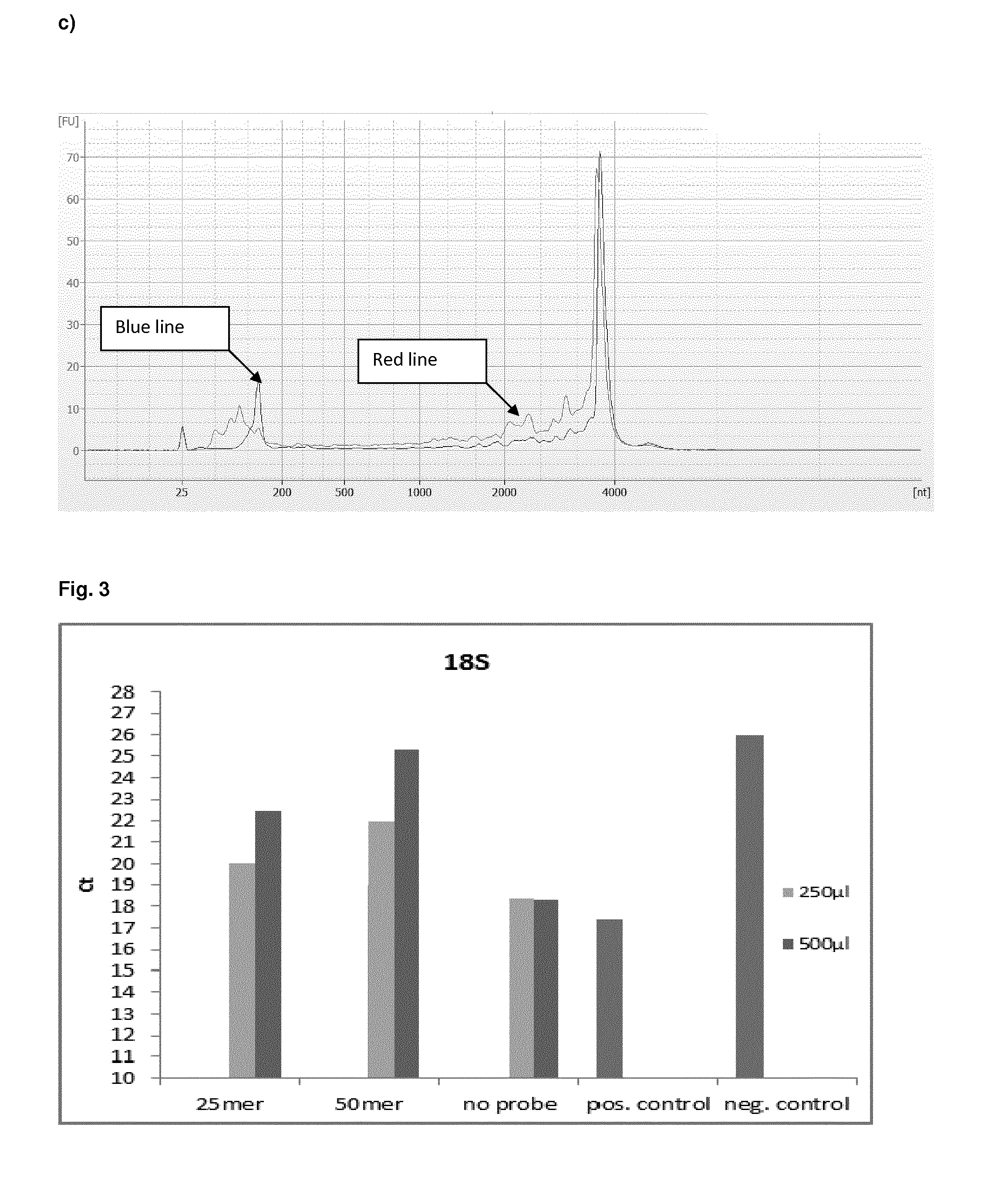Method and kit for preparing a target RNA depleted sample
a technology of target rna and composition, which is applied in the field of preparing a target rna depleted composition, can solve the problems of reducing the power available to investigate the rest of the transcriptome, rna providing little information about the transcriptome, and the presence of interfering rna molecules, so as to remove unwanted target rna and efficiently deplete rrna
- Summary
- Abstract
- Description
- Claims
- Application Information
AI Technical Summary
Benefits of technology
Problems solved by technology
Method used
Image
Examples
examples
I. Materials and Methods
1. DNA Oligonucleotide Probes for 5S, 5.8S, 18S, 28S
[0141]Probes were designed by taking the reference sequences for human, mouse, and rat ribosomal RNA and aligning them in ClustalW2 (http: / / www.ebi.ac.uk / Tools / msa / clustalw2 / ). The resulting file was analyzed for regions of 100% homology among the three species and probes were designed accordingly. Though human, mouse, and rat are used as the main design criteria, these probes are highly homologous to rRNA in a wide variety of other species, with the highest homology occurring among other mammals, but significant homology is also found in all eukaryotes. Thus, groups of probe molecules and probe sets can be designed for more species simultaneously than here demonstrated. Plants, bacteria, and other organisms can all have specific probes sets designed which will be equally effective. Probes can also be designed for any specific nucleic acid sequence for which depletion is interesting, e.g. globin RNA (e.g. in...
PUM
| Property | Measurement | Unit |
|---|---|---|
| temperature | aaaaa | aaaaa |
| temperature | aaaaa | aaaaa |
| temperature | aaaaa | aaaaa |
Abstract
Description
Claims
Application Information
 Login to View More
Login to View More - R&D
- Intellectual Property
- Life Sciences
- Materials
- Tech Scout
- Unparalleled Data Quality
- Higher Quality Content
- 60% Fewer Hallucinations
Browse by: Latest US Patents, China's latest patents, Technical Efficacy Thesaurus, Application Domain, Technology Topic, Popular Technical Reports.
© 2025 PatSnap. All rights reserved.Legal|Privacy policy|Modern Slavery Act Transparency Statement|Sitemap|About US| Contact US: help@patsnap.com



